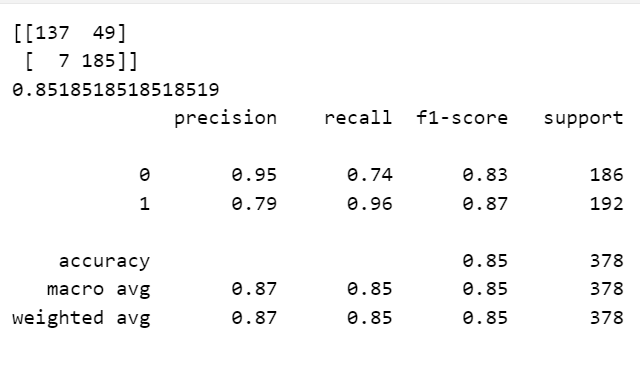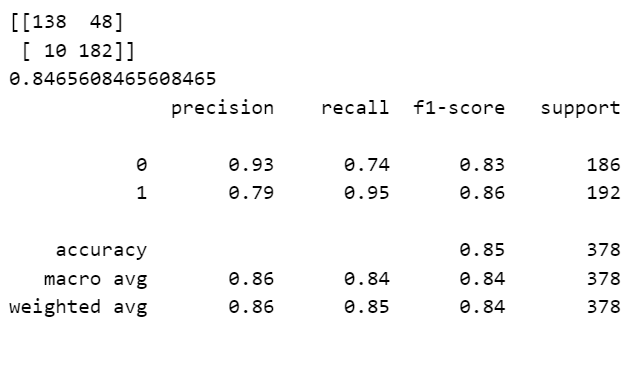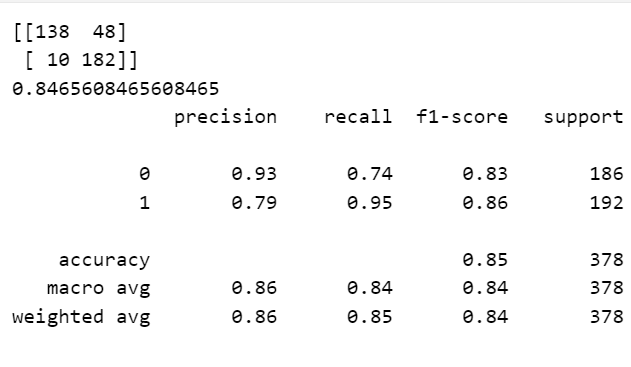Ijraset Journal For Research in Applied Science and Engineering Technology
- Home / Ijraset
- On This Page
- Abstract
- Introduction
- Conclusion
- References
- Copyright
Role of Sentiment in Stock Forecasting
Authors: Kaveri. G, L. Tejashwini, Manjunath. K
DOI Link: https://doi.org/10.22214/ijraset.2025.66656
Certificate: View Certificate
Abstract
The Stocks uses the sentiment analysis in predicting stock market movements by analyzing data from sources like news, social media, and financial reports. Employing a Random Forest machine learning model, the system aggregates sentiment indicators, such as positive and negative emotions, to forecast stock trends and market fluctuations. The results show that sentiment analysis improves prediction accuracy, reduces investment risks, and supports data-driven decision-making. By integrating real-time data, the model adapts to changing market conditions and provides timely forecasts. This approach demonstrates the potential of sentiment-driven analysis to enhance investment strategies and create a proactive tool for financial market analysis.
Introduction
I. INTRODUCTION
The stock market is highly influenced by various factors, including economic indicators, corporate performance, and investor sentiment. In recent years, sentiment analysis has emerged as a powerful tool for predicting stock market trends by analyzing emotions and opinions expressed in sources like news articles, social media, and financial reports. This approach leverages machine learning techniques to interpret large volumes of unstructured data and extract sentiment indicators, which are then used to forecast stock movements. By applying models such as Random Forest, investors can gain insights into market sentiment, allowing them to make more informed decisions, optimize their investment strategies, and reduce risks. The ability to process and analyze vast amounts of real-time data from multiple platforms allows sentiment analysis to capture shifts in public perception and market mood, significantly impacting stock prices. By assessing the emotional tone of news, social media discussions, and expert reports, sentiment analysis can detect early signs of market trends or potential volatility. Furthermore, it can enhance traditional financial models by incorporating qualitative factors that may be overlooked by purely quantitative approaches.
The stock market is a dynamic system influenced by numerous factors, including economic indicators, geopolitical events, and public sentiment. Among these, the emotions and opinions expressed in news articles, social media, and financial reports play a crucial role in shaping market behavior. Sentiment analysis, a branch of natural language processing, helps quantify these emotions, enabling the identification of patterns that impact stock price movements. This approach offers investors valuable insights into market trends, aiding in the development of more informed strategies.
II. LITERATURE REVIEW
A. A Study on Investors’ Perceptions towards Stock Market
This explores the perceptions of investors toward the stock market, with a focus on different geographical areas. It highlights the growing popularity and profitability of the stock market, despite concerns about its volatility. The research examines how investors in Asia perceive stock market investments, particularly in terms of factors such as neutral information, accounting data, and social relevance. These factors shape investors' understanding of a company's financial activities, influencing their decision-making process when selecting shares. Data was collected through online interviews and questionnaires to assess the behaviors, attitudes, and awareness of investors. The study suggests that these perceptions play a significant role in future investment choices.
B. Stock Market Development and Long-Run Growth.
The role of stock markets in economic growth versus their perception as speculative arenas. It reviews theoretical literature suggesting that stock markets contribute to economic development by lowering the cost of mobilizing savings, which facilitates investment in productive technologies. Key theories highlight that stock market liquidity enables easy trading, allowing savers to maintain access to their capital while providing firms with permanent capital through equity issues. Liquidity also encourages investors to gather information about companies, enhancing corporate governance. Furthermore, internationally integrated stock markets improve resource allocation, promoting economic growth by enabling risk-sharing across borders. New empirical evidence is presented to support these theories.
C. Stock market volatility – a study of Indian stock Market.
The significance of the stock market in economic development, emphasizing its role as a platform for buying and selling securities like shares, bonds, and debentures. It discusses how companies list their ventures through public issues, and how long-term investors aim for profits by investing in these companies. In India, the major stock exchanges are the Bombay Stock Exchange (BSE), the National Stock Exchange (NSE), and the Calcutta Stock Exchange (CSE). The paper also explains the concept of volatility, which reflects the risk associated with securities, and its importance for market participants. While developed markets typically offer higher returns with lower volatility, the Indian market has become more informationally efficient. The study aims to provide insights into the past, present, and future of the Indian stock market.
D. Exploring the rise of stock market awareness in india: a post-pandemic perspective.
The importance of the stock market in a nation's economic growth and highlights the significant expansion of India's stock market in recent years. Despite this growth, the general public remains largely unaware of the stock exchange and its operations, which can lead to misguided speculation and financial losses. The research focuses on assessing stock exchange awareness in India and identifying factors that either encourage or hinder investor participation. The study concludes that while factors like age and income do not significantly affect awareness, occupation plays a key role in determining an individual's level of understanding about the stock market.
E. Stock market prediction using machine learning methods.
This explores stock price forecasting, a crucial but challenging task in financial studies, given the volatile nature of share markets. Traditional methods like technical analysis, fundamental analysis, and statistical approaches have limitations in consistently predicting stock prices. The study implements the Random Forest algorithm, which has proven effective in forecasting stock prices and returns. The paper outlines the design of Random Forest and highlights key parameters influencing stock prices. Additionally, sentiment analysis is used to assess the polarity of news articles, further improving forecasting accuracy. While perfect accuracy is unattainable due to market uncertainties, the paper demonstrates the potential of Random Forest in stock price prediction.
F. Machine Learning Stock Market Prediction Studies: Review and Research Directions.
The role of machine learning techniques in improving stock market forecasting, which traditionally relies on vast data evaluation. The study aims to identify future research directions by reviewing current literature on machine learning applications in stock market prediction. Using a systematic literature review methodology, the paper categorizes relevant studies from the past two decades into four groups: artificial neural networks, support vector machines, genetic algorithms combined with other methods, and hybrid/artificial intelligence approaches. It reviews the common findings, unique results, limitations, and areas needing further exploration in each category. The paper concludes by providing recommendations for future research in this field.
G. Stock Market Prediction Using Machine Learning Techniques.
The various machine learning models for stock price prediction, an essential task in the finance sector. The study focuses on using data from American Airlines to train stock price prediction models. Machine learning techniques applied include Decision Tree (DT), Support Vector Regression (SVR), Random Forest (RF), and Artificial Neural Networks (ANN), with Python as the programming language. The dataset, covering the last five years, is divided into 70% for training and 30% for testing. The results of the simulations show that the Random Forest model outperforms the other methods, suggesting its suitability for real-time stock price prediction applications.
H. A Study on Awareness of Stock Market among Management Students through Print Media
The awareness level of the stock market among management students, focusing on the low participation in the market and its potential causes. The research examines how print media, electronic media, and social media awareness influence stock market participation. Data was collected from 400 management students using questionnaires and correlation analysis was applied. The study found a positive correlation between print media awareness and stock market participation, indicating that students with more knowledge about the market are more likely to engage in it. Statistical analysis, including chi-square tests, One Way ANOVA, and regression models, supported these findings, highlighting the importance of media awareness in stock market involvement.
III. PROBLEM DEFINITION
Predicting stock market movements is challenging due to the influence of various factors, including public sentiment expressed in news, social media, and financial reports. Traditional forecasting methods often fail to incorporate these sentiment-driven insights, leading to incomplete analysis and increased investment risks. This addresses the problem by utilizing sentiment analysis with machine learning to process sentiment indicators and predict stock trends, aiming to enhance prediction accuracy, reduce uncertainty, and support informed investment decisions.
IV. METHODOLOGY
Data is sourced from a CSV file containing raw text headlines and sentiment labels, which are cleaned through tokenization, lowercasing, and stop word removal. The preprocessed text is converted into numerical representations using vectorization techniques like TF-IDF or Count Vectorizer. Machine learning models, including Random Forest Classifier and Multinomial Naive Bayes, are trained on these features and evaluated using metrics like accuracy, precision, recall, and F1-score. Finally, the trained models generate sentiment predictions based on the processed input.
1) Algorithm-1: Random Forest Classifier.
This algorithm uses the Random Forest Classifier on the raw feature set to classify sentiment. It evaluates performance through metrics such as accuracy, precision, recall, and F1-score, highlighting its robustness in handling complex datasets.
2) Algorithm-2: Random Forest Classifier with TF-IDF Vectorizer.
The Random Forest Classifier is applied to features extracted using the TF-IDF vectorizer. This combination enhances text representation, improving the model's ability to capture sentiment patterns effectively.
3) Algorithm-3: Multinomial Naive Bayes Classifier.
The Multinomial Naive Bayes Classifier operates on raw features to predict sentiment. Known for its simplicity and efficiency, this algorithm performs well with text data by leveraging word frequency distributions.
4) Algorithm-4: Multinomial Naive Bayes Classifier with TF-IDF Vectorizer.
This algorithm combines the Multinomial Naive Bayes Classifier with vectorized features like TF-IDF. The vectorizer enriches the feature set, boosting the classifier's accuracy in sentiment prediction.
V. RESULTS AND EVALUATION

Fig1:Random Forest Classifier Performance Metrics.

Fig2: Random Forest Classifier with TF-IDF Vectorizer Performance Metrics.

Fig3: Multinomial Naive Bayes Classifier Performance Metrics.

Fig-4:Multinomial Naive Bayes Classifier with TF-IDF Vectorizer Performance Metrics.
Conclusion
Sentiment analysis has proven to be a powerful tool for understanding the influence of emotions and opinions on stock market behavior. By analyzing data from diverse sources such as news and social media, sentiment-driven models can provide valuable insights into market trends. The findings of this project show that sentiment analysis significantly improves the accuracy of predictions, helping investors make better-informed decisions. Additionally, the use of machine learning for processing sentiment data enables dynamic adaptability to changing market conditions. Overall, this approach reduces uncertainty, mitigates risks, and offers a reliable method for enhancing investment strategies in the financial sector.
References
[1] Kok Ban Teoh, Camilo Pérez-Restrepo, Carolina Ardila López, Sharmila Thulasedass, Chetana S, Padmalini Singh, Elyoni Inez Sandra Suardi, Dwi Nita Aryani, Juhi Aggarwal and Abhijit Das,“A Study on Investors’ Perceptions towards Stock Market”, International Journal of Accounting & Finance in Asia Pasific (IJAFAP),Vol. 4 No. 3, 60-74, October, 2021 E-ISSN: 2655-6502/P-ISSN: 2684-9763. [2] Ross Levine and Sara Zervos, “Stock Market Development and Long-Run Growth”, THE WORLDBANK ECONOMIC REVIEW, VOL. 10, NO. 2: 323-339. [3] Sameer Yadav, “STOCK MARKET VOLATILITY – A STUDY OF INDIAN STOCK MARKET”,Global Journal for Research and Analysis, Volume-6,Issue-4,ISSN No 2277-8160. [4] Dr. Ankit Jain and Dr. Gurpreet Singh Arora, “EXPLORING THE RISE OF STOCK MARKET AWARENESS IN INDIA: A POST-PANDEMIC PERSPECTIVE”, Vol-13, Issue-07, No.04, July : 2023, ISSN: 2278-4632. [5] Subhadra Kompella and Kalyana Chakravarthy Chilukuri, “STOCK MARKET PREDICTION USING MACHINE LEARNING METHODS”, International Journal of Computer Engineering & Technology (IJCET),Volume 10, Issue 3, May-June 2019, pp. 20-30. [6] Troy J. Strader, John J. Rozycki, THOMAS H. ROOT and Yu-Hsiang John Huang , “Machine Learning Stock Market Prediction Studies: Review and ResearchDirecti ons”,Journal of International Technology and Information Management, Volume 28,Issue 4, ISSN: 1941-6679. [7] Jagruti Hota , Sujata Chakravarty , Bijay K. Paikaray and Harshvardhan Bhoyar. “ Stock Market Prediction Using Machine Learning Techniques”,pg no 163-171. [8] Prajapathi Krishna, “A Study on Awareness of Stock Market among Management Studentsthrough Print Media”, International Journal of Science and Research (IJSR) ISSN: 2319-7064.
Copyright
Copyright © 2025 Kaveri. G, L. Tejashwini, Manjunath. K. This is an open access article distributed under the Creative Commons Attribution License, which permits unrestricted use, distribution, and reproduction in any medium, provided the original work is properly cited.

Download Paper
Paper Id : IJRASET66656
Publish Date : 2025-01-23
ISSN : 2321-9653
Publisher Name : IJRASET
DOI Link : Click Here
 Submit Paper Online
Submit Paper Online

